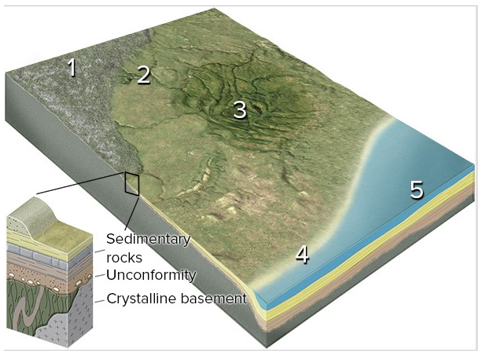The earth's radiative equilibrium temperature is:
a. the temperature at which the earth is absorbing solar radiation and emitting infrared radiation at
equal rates.
b. the temperature at which the earth is radiating energy at maximum intensity.
c. the average temperature the earth must maintain to prevent the oceans from freezing solid.
d. the temperature at which rates of evaporation and condensation on the earth are in balance.
a
You might also like to view...
Which numbered site is likely to have exposure of crystalline rocks?

A) 1, the continental shield
B) 2, the continental platform
C) 3, a basin in the continent
D) 4, a continental shelf
E) 5, a deep sediment-filled basin next to the continent
The temperature at which water boils depends mainly on
a. air temperature b. relative humidity c. air pressure d. air density e. the specific heat of air
Clay's porosity is high, but its permeability is low, which means that it has a low specific yield
Indicate whether this statement is true or false.
All of the following have been proposed as means of disposing of liquid high-level radioactive wastes except
A. a high-temperature incineration to destroy the radioisotopes. B. disposal in (under) ice sheets. C. placement as liquid wastes in bedrock caverns. D. disposal in subduction zones.